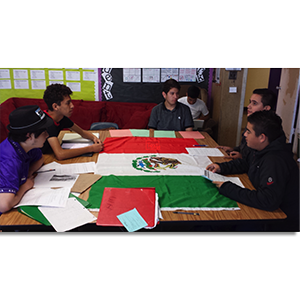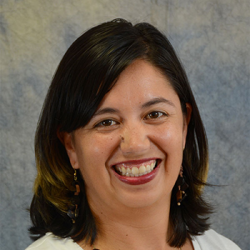 One of my favorite things to tell complaining teenagers when they don’t want to do something in class is that, unfortunately, we all have to do things we don’t want to do. It’s a very effective response. That being said, I try to use it as sparingly as possible because I really believe that everything is better when we get to do the things that we want to do. Enter: Student Choice. Creating opportunities for student choice in PBL is one of the best tools to engage learners. Additionally, it is an excellent and easy strategy that increases equitable access to your curriculum for a wide-variety of learners.
One of my favorite things to tell complaining teenagers when they don’t want to do something in class is that, unfortunately, we all have to do things we don’t want to do. It’s a very effective response. That being said, I try to use it as sparingly as possible because I really believe that everything is better when we get to do the things that we want to do. Enter: Student Choice. Creating opportunities for student choice in PBL is one of the best tools to engage learners. Additionally, it is an excellent and easy strategy that increases equitable access to your curriculum for a wide-variety of learners.
Student choice in content can help engage students from diverse backgrounds.
One of my favorite PBL strategies as a world history teacher is to teach thematic units that provide students with multiple options for specific content. To make it manageable for myself, I generally offer students 3-5 options to choose from. For example, in a unit on revolutions, students learn about the basic framework that revolutions follow as well as common causes of revolutions, then get to choose a revolution to study from a region of the world that interests them. For many of my Mexican-American students, it is their first chance to learn about their own country at school! I have African-American students learning about the Haitian revolution who never knew about this successful slave rebellion. By starting with a common understanding of revolutions, all students feel comfortable accessing the content and get to dive deeper into something that connects to them personally. (Check out the video of this project.)
Student choice in texts can help students of all skill levels.
In a text-heavy class like social studies, one of the best ways I’ve found to engage struggling readers is to provide them options in what they read. When reading primary sources about the Holocaust, students might be choosing between a diary entry, a speech by a Holocaust survivor, or a testimony of a soldier involved in liberation. These options can cater to different student preferences and interests. Importantly, they can also give students at different reading levels access to rich primary sources based on the level, length, and complexity of the text. I think it’s important to explicitly name these options and let students choose their level of challenge for the day. A colleague of mine at Impact Academy of Arts and Technology in Hayward, CA, Joycelin Hunter, labels her leveled texts “Mild”, “Medium” and “Spicy”! The middle school students love being able to choose their level of spiciness when selecting texts for a lesson.
Student choice in products can ensure success for students with different strengths and interests.
When students are able to show what they know in a way that showcases their strengths, they are much more likely to push through obstacles and present their best work. Allowing students to choose, even between a couple of different product options, gives them the chance to show you how much they’ve learned in a way feels good to them. I prefer to do this with products that can be graded using the same rubric, as a way to make assessment more clear to my students and cuts down on my own work. In a recent WWII unit, I realized I could grade debates and Socratic Seminars in exactly the same way! I had some students who loved the thrill of argumentation and wanted to really prove another team wrong. At the same time, I had other students who felt uncomfortable with conflict and preferred to engage in active dialogue with their peers. Either way, I could see if they understood the content, could form clear responses to historical dilemmas, and provide relevant evidence to illustrate their ideas.

